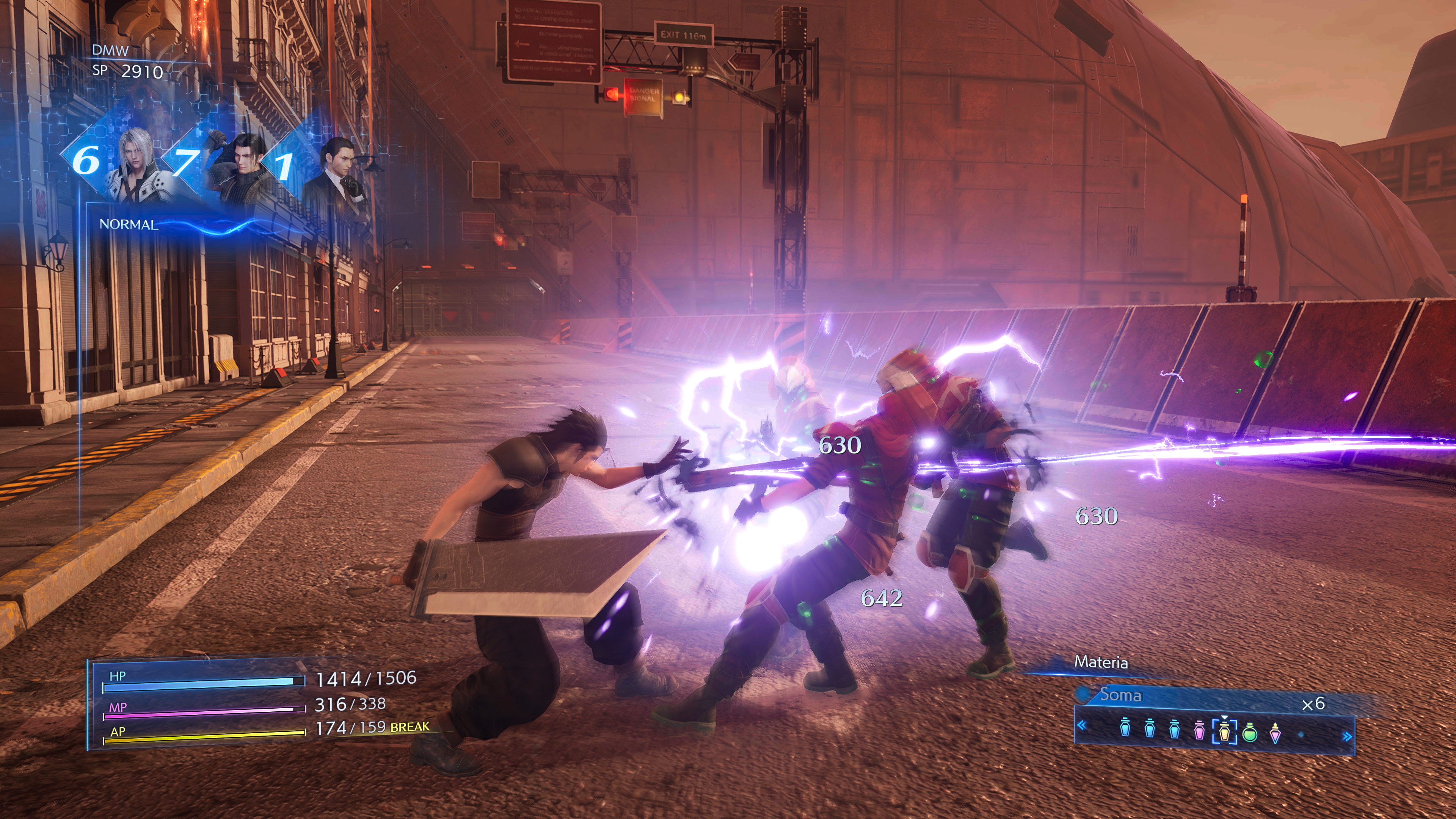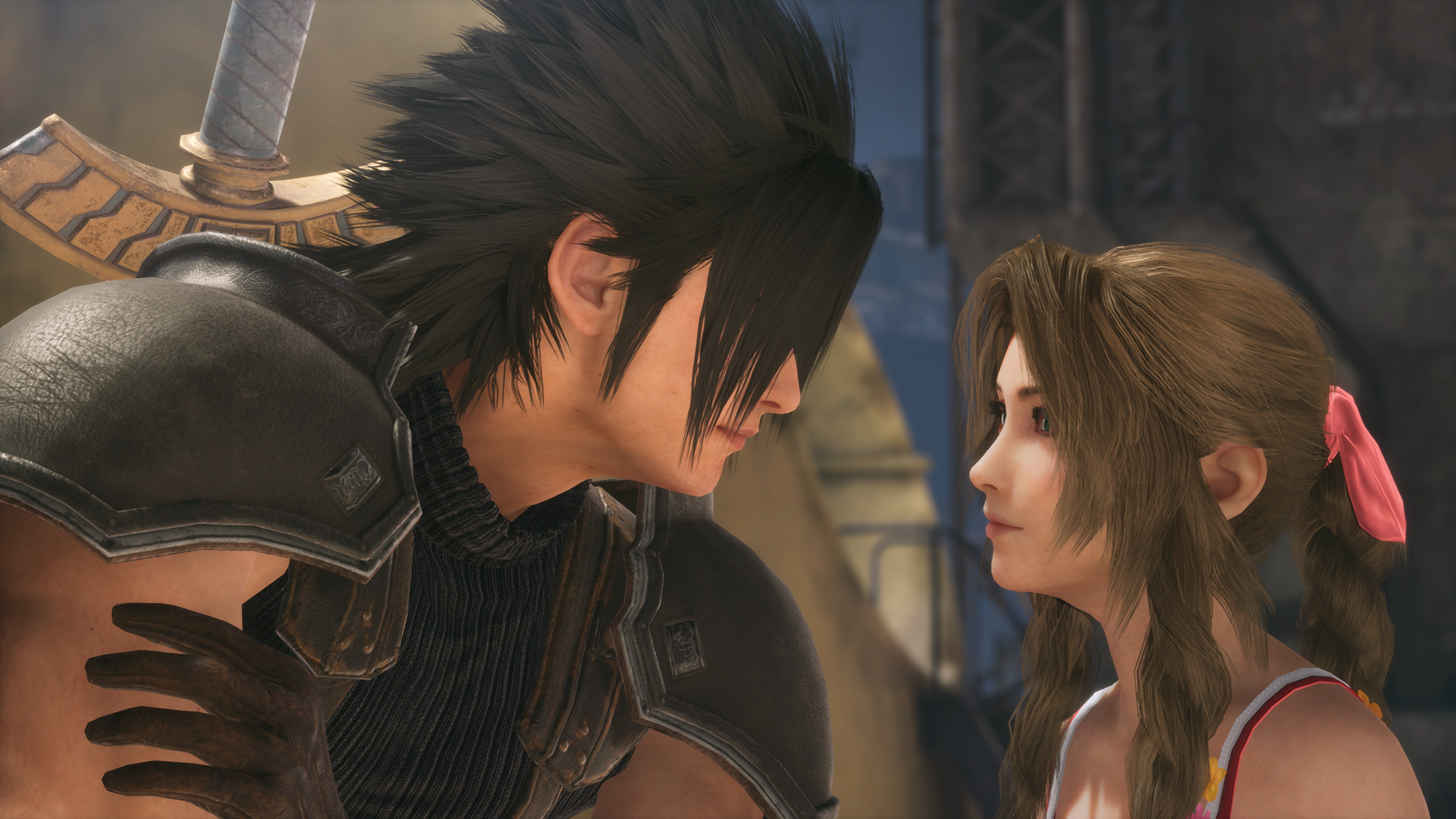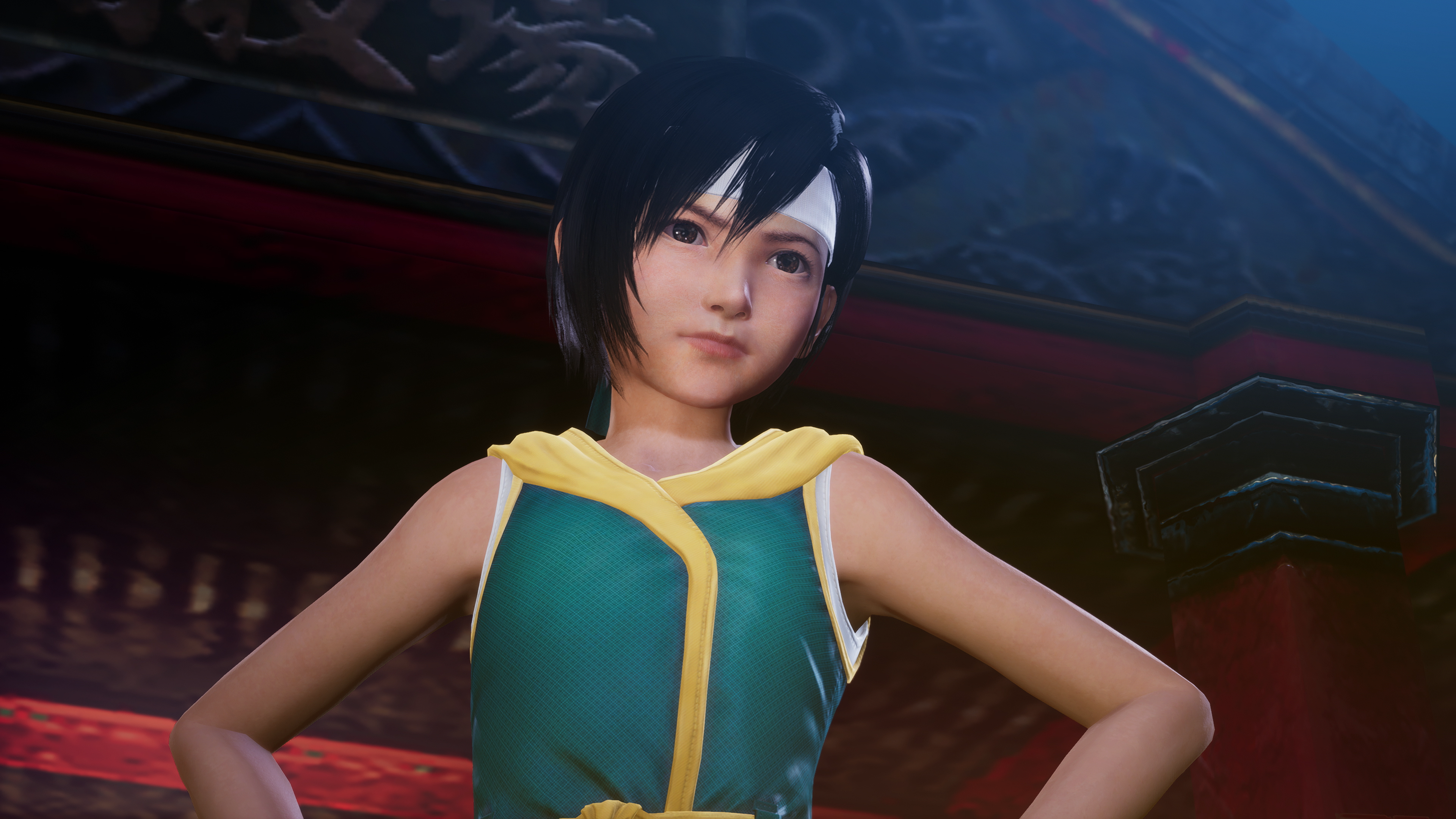I never played Final Fantasy 7: Crisis Core as a kid. My brother had the PSP, and used it to play mediocre platforming spin-offs like Daxter and Secret Agent Clank instead of actual good games. He even bought Saints Row even after I told him it was bad recently, so let’s consider him a lost cause. But now I finally have a chance to right that wrong, and to fill a gap of Final Fantasy knowledge that has hung over me for too damn long.
After playing a small section of the upcoming remaster at a recent Square Enix event, I think the wait might actually be worth it. Instead of simply updating the textures and enhancing the resolution before calling it a day, Reunion uses Final Fantasy 7 Remake as a foundation to build something far more ambitious. While its portable origins shine through so much of its presentation, it still manages to feel great to play and looks even better.
Given I haven’t played the original (shame on me) I was thrown into a moment that to me was completely unknown. I find myself next to a Leviathan shrine inside a Wutai temple. Glorious pagodas threaten to touch the sky, while local mercenaries are quick to spring forth and pull me into a fight. Not before Yuffie shows up though, a much younger version of her character who wants to become a capable warrior even if it means putting herself in danger.
She’s adorable, and witnessing this earlier time in the world of Final Fantasy 7 immediately has its charms. Protagonist Zack Fair is also confident and far less jaded, looking up to future villains like Sephiroth and believing Shinra to be partially altruistic in its goals for the planet. How wrong our sweet boy turns out to be, but we can’t help but support his outlook and do everything we can to fill his shoes. Crisis Core is very Advent Children in its narrative and aesthetic, but the existence of Final Fantasy 7 Remake makes it feel far less polarising than it used to be. This is no longer a questionable prequel to the 1997 classic, but vital context for Rebirth with character moments and narrative development that will prove invaluable. Zack is back, and we will likely need to know everything about him.
But enough background, time for juicy details on the section I played. Fans of modern Final Fantasy will jump into this game expecting something grand, but Crisis Core is knowingly limited given the original hardware it spawned from. Environments are rather simple, with the Wutai temple consisting of a few large open areas and linear walkways where unavoidable battles spring up before I can progress the story. Cutscenes link together new locations and you are often thrust into encounters without any knowledge or sufficient way to prepare.
This gives Crisis Core a decidedly archaic feel, even more so given battles only ever take place against a few enemies at any time. The PSP couldn’t handle much more, and the remaster isn’t really in a position to build upon those fundamentals without reshaping the entire thing. Advancing through locations is a case of battle - cutscene - battle - battle - cutscene - boss battle. Exploration plays a role too and there seem to be secrets and items to collect, but the section I played didn’t feature NPCs I could chat with or accept quests from. It was all about the combat, which to its credit is pretty good and filled with strategy.
Reunion’s user interface has been updated to appear almost identical to Remake. Menus are simple and slick, with a few options available as we pick between abilities and spells. Zack has a standard attack he can perform and a basic dodge roll, but the rhythm of each battle is dictated by using spells at the right time and right distance to exploit weaknesses and do maximum damage. There’s also the infamous slot machine mechanic, which has a bunch of random characters spinning away in the corner of the screen. The right combo of numbers and faces will result in valuable buffs such as damage endurance and the option to use abilities without wasting points, while this is also the only way limit breaks are accessed.
I’m not sure whether I like the element of chance this slot machine gimmick brings to proceedings. In a boss battle against Ifrit I found myself trounced during my first attempt because I ran out of healing items and didn’t have the AP required to nullify his special attacks, but a second attempt saw me receive three special moves in a row because the gods of random number generation decided I was worthy. It made the battle much easier, but not because I’d gotten better or bothered to learn mechanics. I just got super lucky.
The full game is likely more deliberate in its strategy, but here I had a basic selection of spells and a single attack button, so the slot machine felt like a saving grace when I wasn’t good enough as opposed to a fundamental part of the battle system. Maybe it isn’t random, and I’m just missing something, but it’s weird and I can see why fans have spent 15 years turning their noses up at it. Don’t go into this expecting an experience on the same standard as a remake, but a lower budget prequel with a valuable story to tell that will link together dots more relevant than ever in this new timeline. Maybe it also holds a surprise or two.
Final Fantasy 7: Crisis Core Reunion didn’t blow me away, but I never expected it to. I knew it was a remake of a game from a portable console that has been outdated for almost two decades, so there was only so much Square Enix could do when it came to updating it for the modern era. Yet it has absolutely done enough, and fans of the series both new and old will find a lot to love here. Here’s hoping the slot machine nonsense starts to grow on me.

.jpg)


